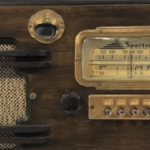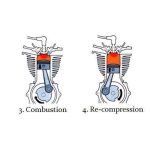
One area of surprising discoveries in the 20th century was microprocessors. Information technology had certainly captured popular attention by the turn of the century. In 1900 the public was already excited about new means of communication. Visionaries were predicting distribution of news, music, and even sermons by telephone. Some believed that phonograph records would replace books. One French science fiction writer even campaigned to build arrays of powerful lights as a signal to extraterrestrials.
Calculating and computing machinery were also flourishing in 1900. [A] What no one of that era anticipated was the advent of compact, cheap computing power that resulted from a series of innovations that quickly supplanted one another. [B] Vacuum tubes, transistors, and finally integrated circuits, or microchips, created an electronics revolution within a half century. [C] The first chips were developed in 1958 using the common substance silicon as a semiconductor. [D] In the early 1960s Gordon Moore, a founder of Intel Corporation and pioneer in the development of integrated electronics technology, made the now-celebrated prediction that the power of chips would double every two years. Within 30 years, one chip would be doing the work of millions of transistors. This power made possible the construction of the first personal computers in the late 1970s. By the 1980s small business and home computers requiring no programming experience were available. Chips also replaced mechanical parts in almost every kind of device, from coffeemakers to automobiles.
Integrated circuits have hidden costs. Mechanical devices such as manual typewriters needed periodic cleaning and adjustment, but they could last for decades. Tubes in older radios and television sets could be replaced individually. Newer types of equipment such as digital camcorders built with integrated circuits are less likely to fail, but if they do fail, they may require costly repairs; also, systems controlled by microprocessors need reliable, high-quality sources of electrical power, sources that are still unavailable in much of the world. The skills required for mechanical design and repair have been lost as demand for them shrinks. Even doctors may be less effective as listeners and observers because many now rely heavily on the results of scans and tests made possible by integrated circuits.





